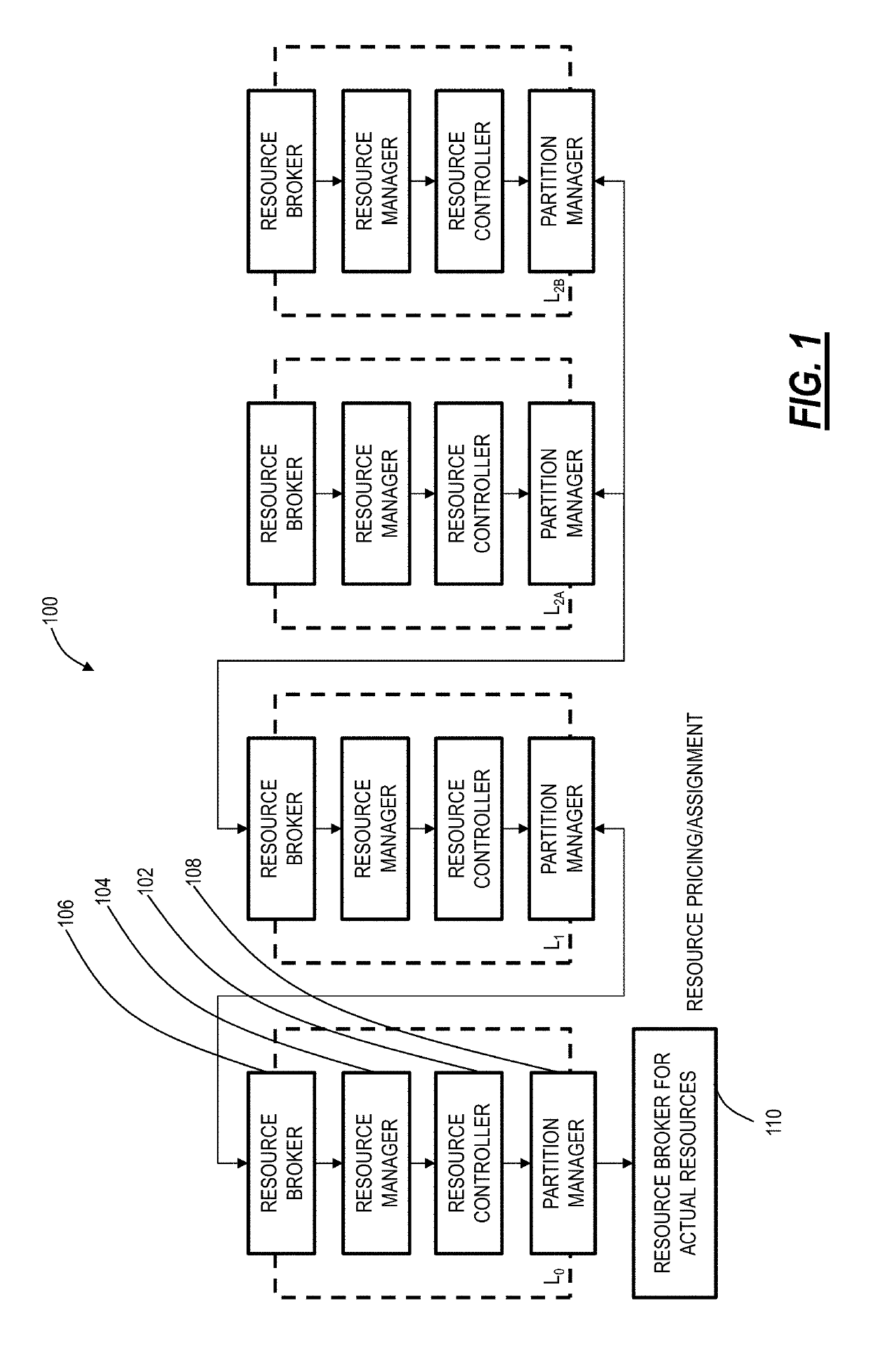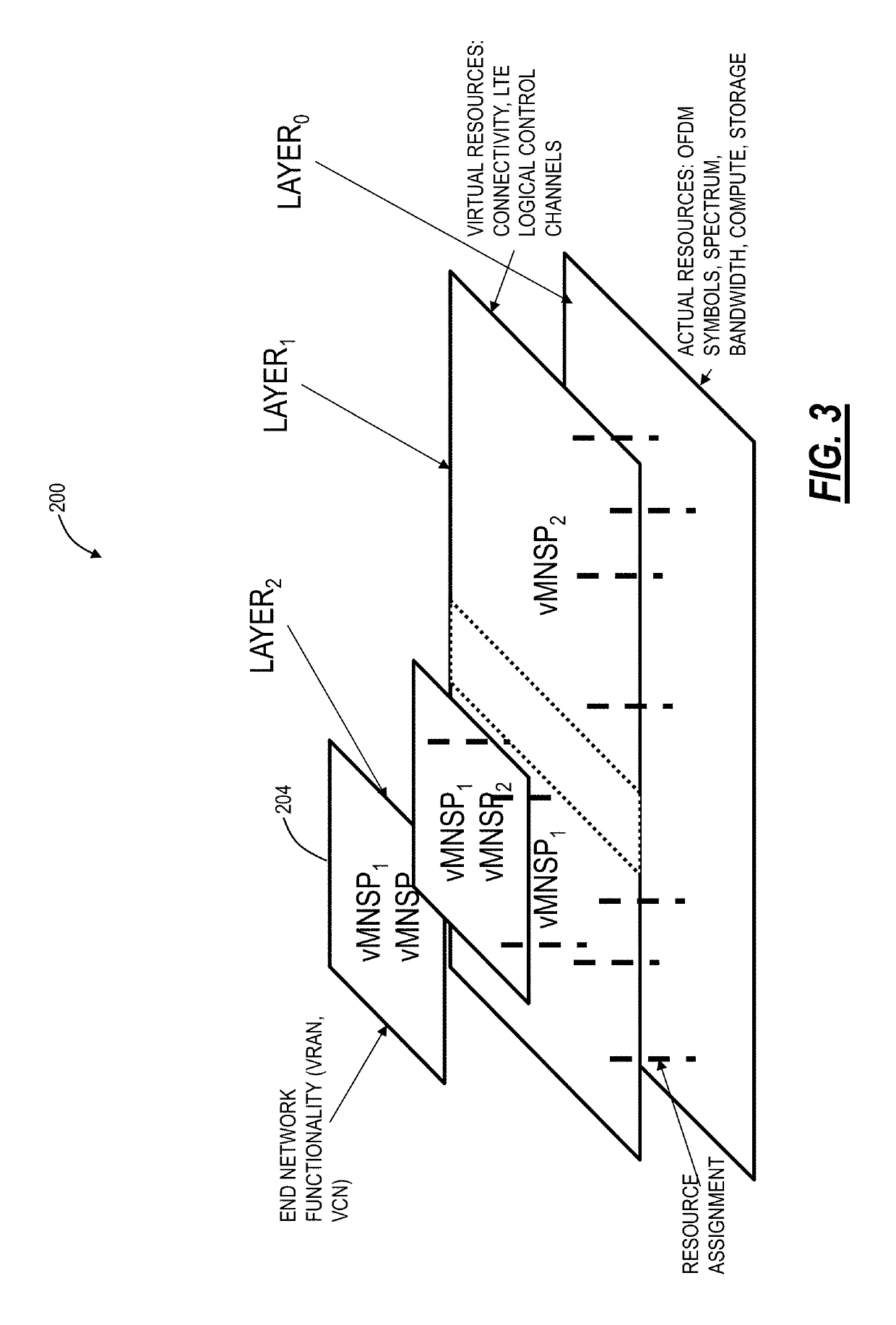Autonomic resource partitions for adaptive networks
- Summary
- Abstract
- Description
- Claims
- Application Information
AI Technical Summary
Benefits of technology
Problems solved by technology
Method used
Image
Examples
Embodiment Construction
[0027]In various embodiments, the present disclosure relates to systems and methods for autonomous resource partitions for adaptive networks, such as 5G network slices. The systems and methods automate the process by which link, switch, spectrum (wireless and optical), storage, compute, and other controllable (tangible) resources in the network are assigned to resource partitions, used to create Virtual Mobile Network Service Providers (vMNSPs) on a shared infrastructure. The systems and methods include a set of components, protocols and reinforcement learning algorithms based on deep Q-networks (DQN) that automate the process of assigning resources (actual or virtual) to resource partitions, which are the building blocks used to layer internal functionality of a vMNSP through dynamic compositions of virtual network functions. Deep Q-networks are described in Mnih, Volodymyr et al. “Playing Atari with deep reinforcement learning.” arXiv preprint arXiv:1312.5602 (2013) and Mnih, Volo...
PUM
 Login to View More
Login to View More Abstract
Description
Claims
Application Information
 Login to View More
Login to View More - R&D
- Intellectual Property
- Life Sciences
- Materials
- Tech Scout
- Unparalleled Data Quality
- Higher Quality Content
- 60% Fewer Hallucinations
Browse by: Latest US Patents, China's latest patents, Technical Efficacy Thesaurus, Application Domain, Technology Topic, Popular Technical Reports.
© 2025 PatSnap. All rights reserved.Legal|Privacy policy|Modern Slavery Act Transparency Statement|Sitemap|About US| Contact US: help@patsnap.com



